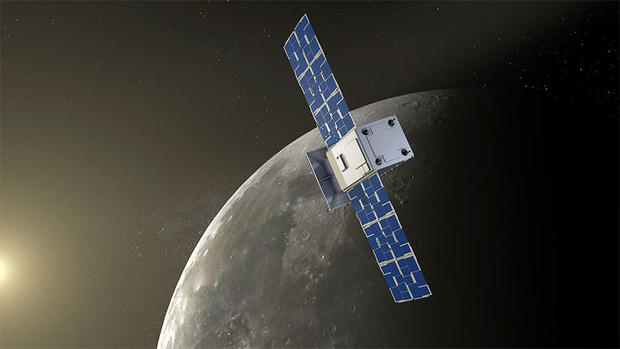Engineers scramble to restore contact with moon-bound spacecraft
Flight controllers have lost contact with a small pathfinder spacecraft launched last week to test an unusual lunar orbit planned for NASA's Artemis moon program, officials said Tuesday. Engineers are troubleshooting and attempting to re-establish communications.
Launched last Tuesday from New Zealand atop a Rocketlab Electron rocket, the CAPSTONE spacecraft relied on a compact-but-sophisticated upper stage for thruster firings to repeatedly "pump up" the high point of an increasingly elliptical orbit to the point where it could break free of Earth's gravity and head for the moon.
Those maneuvers went well and CAPSTONE, owned and operated by Advanced Space of Westminster, Colorado, was released from Rocketlab's Photon upper stage early Monday to fly on its own. The company confirmed successful solar array deployment, spacecraft stabilization and battery charging.
The 55-pound spacecraft successfully oriented itself to permit communications with flight controllers on Earth and began sending telemetry back through NASA's Deep Space Network antennas in Madrid, Spain.
Spacecraft commissioning proceeded normally for the first 11 hours. But during a second communications pass "an anomaly was experienced related to the communications subsystem," Advanced Space said on its website.
"The operations team is actively working the issue with the Deep Space Network and determining the best next steps."
In the meantime, a planned trajectory correction maneuver to fine-tune CAPSTONE"s path toward the moon was delayed, leaving the craft in its initial "ballistic lunar transfer," or BLT, trajectory. At the time of the Advanced Space update Tuesday, CAPSTONE was about 174,000 miles from Earth.
"One of the benefits of the BLT, the designed trajectory, is its robustness to delays such as this," the company said in its web update. The (trajectory) and system margins provide time to resolve and understand this anomaly before proceeding with the first trajectory correction maneuver."
CAPSTONE was launched to serve as a pathfinder for NASA's planned Gateway lunar space station, testing an unusual lunar orbit that's critical to the agency's Artemis moon program.
The microwave-size CAPSTONE also is designed to measure the deep space radiation environment and test techniques that one day might determine a moon-orbiting spacecraft's exact location without relying on Earth-based tracking.
The ballistic lunar transfer trajectory will carry it more than 800,000 miles from Earth — more than three times the 240,000-mile distance between Earth and moon — before it reaches a point in mid-November when it can slip into the planned "near rectilinear halo orbit," or NRHO, around the moon's poles.
But communications are essential and contact must be restored for the spacecraft to carry out its mission.
"If anything goes wrong (with the CAPSTONE mission), we have full plans that we can move forward with Gateway and really all of the Artemis missions that will use NRHO," Nujoud Merancy, chief of the Exploration Mission Planning Office at the Johnson Space Center, said before launch.
"This data would be really valuable ... but it's not necessary or required to proceed," she added. That said, it's "always good to get more data and improve our modeling, but we have full confidence in the data that will be happening either way."
The CAPSTONE mission cost roughly $30 million, NASA said: $20 million for the spacecraft, its development and operations, and another $10 million for the Electron launcher.





